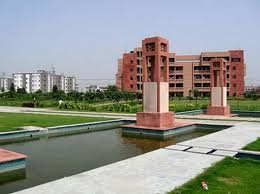
Today’s hyper connected world is truly a global village, and the credit for this goes to engineering. The once monolithic field of engineering has splintered into many disciplines, creating many conventional and unconventional job opportunities. Roselin Kiro of Elets News Network (ENN) finds out some of the unusual yet upcoming careers in engineering that offer promising scopes.
Technical education plays a vital role in a country’s progress, producing skilled manpower, enhancing industrial productivity and improving the quality of life. Indians have traditionally been drawn to the engineering field. But recently, engineering is seeing a significant growth in India, with a number of engineering institutions coming up. Along with reputed engineering institutions like IITs and NITs, there has been a spurt of private engineering colleges as well. Engineering education was started in India by the British and focused mainly on civil engineering, which arose out of the need for the construction and maintenance of public buildings, roads, canals, ports etc. With time, the branches of engineering have diversified. Here are some of the unique and unusual branches of engineering with new age career options for students to look out for.
1.Environmental Engineering: This new branch of engineering aims to address environmental issues like the maintenance of air, water and land resources scientifically. Environmental engineers learn to design, construct and maintain proper waste management system for habitation. The water resources sector needs a large number of qualified engineers for ensuring drinking water to rising world population. Industries too require skilled environmental engineers. According to Rishabh Sethi, Chief Operating Officer, SPML Infra Limited, “There is a good demand of environmental engineers, but as of now the availability is limited. Environmental considerations and guidelines in all infrastructure development projects is much higher now than ever before, and for any large and complex projects, good qualified environmental engineers will be a resource. The demand would increase with the passage of time and hence the requirement is to produce good environmental engineers”
Career path: An environmental engineer can find jobs in NGOs, research centres, and many governmental departments look out for environmental engineers.
Few institutions offering this course: Indian Institute of Technology, Kanpur; Indian Institute of Technology, Kharagpur; Delhi College of Engineering; Sri Venkateswara University, Tirupati; Hindustan College of Science & Technology, Mathura.
 “Engineering education have followed changes in technology and society to meet the critical challenges and to provide the workforce required skill sets to integrate new developments into the economy” – Rishabh Sethi, Chief Operating Officer, SPML Infra Limited
“Engineering education have followed changes in technology and society to meet the critical challenges and to provide the workforce required skill sets to integrate new developments into the economy” – Rishabh Sethi, Chief Operating Officer, SPML Infra Limited
 2.Electronics and Communication Engineering: This discipline deals with electronic devices and software interfaces. Its scope stretches from the inside of a house to the industries. This course moulds a student to direct, control and test produce processes as well as to ensure the safety, installation and functioning of gadgets. This discipline incorporates knowledge based on digital electronics and logic design, fundamentals of communication engineering, electronic circuits, signals and systems, power electronics, applied electromagnetic theory, integrated circuits, control systems and computer architecture. According to P Sivarama Prasad, Associate Professor and HOD, Department of Electronics and Communication Engineering, NRI Institute of Technology, “Electronics and Communication Engineering is the evergreen branch of engineering throughout the world since its inception due to rapid development in semiconductor physics and communication technology. Electronics and communication engineering has engulfed day-today activities of human beings. As a result, there is a huge demand for electronics and communication engineering graduates, both in hardware and software industries”. In today’s electronic age, there is a huge demand of skilled professionals to cater the needs of the society. Dr. Sunandan Baruah, HOD department of Electronics and Communication Engineering, Don Bosco College of Engineering and Technology, Guwahati says, “In this electronic age, new gadgets with multiple and advanced features is a boon to us. Noise free communication and high speed data transfer has become the need of the day. Improved analytical and diagnostic instruments are being developed, increasing the demand for engineering graduates in electronics and communication engineering.”
2.Electronics and Communication Engineering: This discipline deals with electronic devices and software interfaces. Its scope stretches from the inside of a house to the industries. This course moulds a student to direct, control and test produce processes as well as to ensure the safety, installation and functioning of gadgets. This discipline incorporates knowledge based on digital electronics and logic design, fundamentals of communication engineering, electronic circuits, signals and systems, power electronics, applied electromagnetic theory, integrated circuits, control systems and computer architecture. According to P Sivarama Prasad, Associate Professor and HOD, Department of Electronics and Communication Engineering, NRI Institute of Technology, “Electronics and Communication Engineering is the evergreen branch of engineering throughout the world since its inception due to rapid development in semiconductor physics and communication technology. Electronics and communication engineering has engulfed day-today activities of human beings. As a result, there is a huge demand for electronics and communication engineering graduates, both in hardware and software industries”. In today’s electronic age, there is a huge demand of skilled professionals to cater the needs of the society. Dr. Sunandan Baruah, HOD department of Electronics and Communication Engineering, Don Bosco College of Engineering and Technology, Guwahati says, “In this electronic age, new gadgets with multiple and advanced features is a boon to us. Noise free communication and high speed data transfer has become the need of the day. Improved analytical and diagnostic instruments are being developed, increasing the demand for engineering graduates in electronics and communication engineering.”
Career path: One can find job in the consumer electronics, electricity generation and distribution, communications, transportation and many more.
Few institutions offering this course: Alliance College of Engineering and Design, Alliance University; Uttaranchal Institute of Technology (UIT); NRI Institute of Technology, Kothur; Amity University, Noida; Don Bosco College of Engineering and Technology, Guwahati.
3. Aerospace Engineering: Aerospace engineering is among the glamorous branches of engineering. Aerospace engineers design and build different kinds of aircrafts using the latest technologies. They often work in large aviation companies like Airbus, Boeing and even NASA. Engineers from this field mainly deal with development of new technology in aviation, space exploration and defense system. According to Professor Bhaskar, HOD Aerospace Engineering, Indian Institute of Technology, Madras, “After successful completion of this course, a student can join the core engineering sector as associate engineers and senior associates. Main thrust areas of aerospace engineers in recent times are finite element method and analysis, combustion, thermal engineering, vibration and noise, aero elasticity and many more.”
 Career path: One can find jobs like aerospace designer checker, assistant technical officer, aircraft production manager, thermal design engineers, scientist at Defence Research and Development Organisation (DRDO) at ‘B’ or ‘C’ level, and students can also join as analysts in other sectors.
Career path: One can find jobs like aerospace designer checker, assistant technical officer, aircraft production manager, thermal design engineers, scientist at Defence Research and Development Organisation (DRDO) at ‘B’ or ‘C’ level, and students can also join as analysts in other sectors.
Few institutions offering this course: Indian Institute of Technology, Madras; Anna University, Chennai; Bengal Engineering and Science University, West Bengal; Indian Institute of Aeronautical Engineering, Dehradun; Indian Institute of Aeronautics, Patna; Institute of Aviation Technology, Bahadurgarh, Haryana
 4. Marine Engineering: This branch of engineering is an interesting and adventurous career option for water sports lovers. Also known as Ocean Engineering, it broadly refers to the engineering of boats, ships, oil rigs etc. This branch of engineering combines other engineering disciplines to develop systems that operate in the oceans and coastal waters. It also includes fields of studies like marine biology, oceanography, geophysics and marine geology, power and propulsion plants, automation and control system for marine vehicles of any kind like surface ships, submarines etc. According to A.N.S Neti, Engineer Officer and Training in-charge, Marine Engineering and Research institute (MERI), Mumbai, “A marine engineer is eligible to join the challenging and demanding shipping field as junior engineer on merchant navy ships. With experience and qualifying the examination conducted by DG shipping, the candidate can rise to the rank of Chief Engineer which is the highest position in engine department”.
4. Marine Engineering: This branch of engineering is an interesting and adventurous career option for water sports lovers. Also known as Ocean Engineering, it broadly refers to the engineering of boats, ships, oil rigs etc. This branch of engineering combines other engineering disciplines to develop systems that operate in the oceans and coastal waters. It also includes fields of studies like marine biology, oceanography, geophysics and marine geology, power and propulsion plants, automation and control system for marine vehicles of any kind like surface ships, submarines etc. According to A.N.S Neti, Engineer Officer and Training in-charge, Marine Engineering and Research institute (MERI), Mumbai, “A marine engineer is eligible to join the challenging and demanding shipping field as junior engineer on merchant navy ships. With experience and qualifying the examination conducted by DG shipping, the candidate can rise to the rank of Chief Engineer which is the highest position in engine department”.
Career path:Marine engineers can work as under acousticians in underwater vehicles, coastal engineers, geotechnical engineers, navy weapon engineering officer, marine engineering officer, harbor master, pump man and many more.
Few institutions offering this course: Marine Engineering and Research Institute, Mumbai; Indian Institute of Technology, Madras; International Maritime Academy (IMA), Chennai; Cochin University of Science and Technology; National Institute of Technology (NITC), Kozhikode.
5. Agriculture Engineering: The task of an agricultural engineer is to improve the agricultural production by means of better engineering methods, inventions, technology and equipment, which also require a good intellect and a desire to make a difference to the future of farming. According to Dr Derrick Mario Denis, Professor and Dean Vaugh School of Agricultural Engineering & Technology, Sam Higginbottom Institute of Technology and Science, Allahabad, “The agricultural engineering industry is on a mission to help produce ‘more with less’, whether it is a more efficient way of tilling or threshing, an irrigation system that uses less water or food preservation that manages seasonal glut for the lean times ahead. An engineering degree in agriculture trains young minds and make them emerge as trained professionals to cater to the agricultural and related industrial needs of the community”. Dr Wazid Ali Khan, Professor, Department of Agricultural and Food Engineering, Maharashtra Institute of Technology, Aurangabad says, “Growth of agricultural engineering industry is on the higher side in the Agro & Agro-based industry. Technological changes with respect of seed production, controlled environment crop production and storage leading to high yields is picking up at a rapid rate.” There is a requirement of skilled agricultural engineers suitable for industry as well as global challenges. Dr Wazid further adds, “Banking sector needs skilled agriculture engineer and food engineer in dairy development, farm mechanisation, food processing with knowledge about the economic viability”.
Career path: One can find job profiles such as planning, supervising and managing irrigation, drainage, water control system, food processing, food machinery, packaging, ingredient manufacturing, and processing technology and in healthcare firms.
Few institutions offering this course: Indian Institute of Technology, Kharagpur; College of Agricultural Engineering, Acharya NG Ranga Agricultural University, Rajendranagar; Shere- Kashmir University of Agricultural Sciences and Technology, Jammu; Sam Higginbottom Institute of Agriculture, Technology and Science, Allahabad.
 6. Automobile Engineering: The rapid advancement of technology in recent years has ushered in a new era of hi-tech vehicles, making the Indian auto industry very competitive. It deals with the designing of vehicles, manufacturing new products, repairing and servicing vehicles. It includes fields of studies like motor systems, design, technology and many more. With the growth in the automobile sector, there is a huge demand of skilled automobile engineers. Automobile engineering field requires a lot of determination, dedication and hard work.
6. Automobile Engineering: The rapid advancement of technology in recent years has ushered in a new era of hi-tech vehicles, making the Indian auto industry very competitive. It deals with the designing of vehicles, manufacturing new products, repairing and servicing vehicles. It includes fields of studies like motor systems, design, technology and many more. With the growth in the automobile sector, there is a huge demand of skilled automobile engineers. Automobile engineering field requires a lot of determination, dedication and hard work.
Career path: Automobile engineers can get job profiles like executive and managerial position in automobile manufacturing industries in departments like design, planning, maintenance, Research and Development, sales and marketing, maintenance and service engineer in automobile workshops, aircraft industries and aviation and many more.
Few institutions offering this course: The Oxford College of Engineering, Bangalore; JECRC University, Jaipur; Swaminarayan College of Engineering and Technology, Kalol; PSG College of Technology, Coimbatore; Manipal Institute of Technology, Karnataka; Greater Noida Institute of Technology (GNIOT).
We see a massive growth in the engineering industry, thanks to major investments from national and major international players. India is now a sought after destination mainly for highly skilled workforce and possibly for cheap raw materials
 7. Architectural engineering: This discipline trains students to apply the engineering principles for constructing, planning and designing buildings and other structures that can withstand natural calamities such as hurricanes, heavy snow, earthquakes, etc. It not only covers various fields like spatial design, aesthetics, safety management, material management but also works on building system designs and structures, computer aided designs and models, etc.
7. Architectural engineering: This discipline trains students to apply the engineering principles for constructing, planning and designing buildings and other structures that can withstand natural calamities such as hurricanes, heavy snow, earthquakes, etc. It not only covers various fields like spatial design, aesthetics, safety management, material management but also works on building system designs and structures, computer aided designs and models, etc.
Career path: Architecture engineers can work as structural engineers, construction engineers, building inspector, construction technologists, urban, community and regional planners, environmental designers, technical architects etc
Few institutions offering this course: Apeejay Institute of Technology, School of Architecture and Planning, Noida; College of Engineering And Technology, Bhubaneswar; Government Engineering College (GEC), Kerala; Malaviya National Institute of Technology, Rajasthan.
 8. Robotic engineering: It is one of the top career choice made by engineering students which deals with the design, construction, operation and application of robots. Robotics is taught as a specilisation in computer science, electrical and computer engineering and interactive mechanical engineering fields. Automation and Robotics Engineering is a rapidly growing field. Research in this field focuses on human robot interaction, artificial intelligence, medical robotics, control systems and sensors, automatic navigation systems, kinematics, entertainment and gaming systems, aeronautics and space etc
8. Robotic engineering: It is one of the top career choice made by engineering students which deals with the design, construction, operation and application of robots. Robotics is taught as a specilisation in computer science, electrical and computer engineering and interactive mechanical engineering fields. Automation and Robotics Engineering is a rapidly growing field. Research in this field focuses on human robot interaction, artificial intelligence, medical robotics, control systems and sensors, automatic navigation systems, kinematics, entertainment and gaming systems, aeronautics and space etc
Career path: There are many job opportunities in this field like, researchers, robotics system engineer, robotic specialist, analyst, and can apply the concept of robotics in the area of psychology, biology, chemistry, bioengineering etc
Few institutions offering this course: SRM College of Engineering, Chennai; University of Technology and Management, Kolkata; Vel Tech, Delhi; Vels Institute of Science, Technology & Advance Studies, Chennai.
9. Petroleum Engineering: Petroleum engineering deals with the production and processing of products like gasoline, diesel, heating oil from crude oil. Petroleum engineers work closely with geologists to understand the geologic formation and properties of rocks containing the oil reservoir, determine the drilling methods to be used and the maximum profitable recovery of oil and gas. Petroleum engineering is inter-related with other disciplines such as geophysics, petroleum geology, formation evaluation, drilling, reservoir engineering and many more. According to Dr Satish Sinha, Assistant Professor, Rajiv Gandhi Institute of Petroleum Technology, Raebareli, “There is a huge demand of petroleum engineers in the industry. Petroleum engineers get jobs in the upstream sectors in oil and gas industries like ONGC, OIL, GAIL etc. There are several private sector companies like Reliance, Cairn etc. who look for talents in this field.”
Career path: The job profiles for this branch are processor, oil and gas extraction, petroleum refining, technical service etc.
Few institutions offering this course: Indian Institute of Technology, Mumbai; University of Petroleum & Energy Studies (UPES), Dehradun; Rajiv Gandhi Institute of Petroleum Technology (RGIPT), Uttar Pradesh; Indian School of Mines University(ISM), Dhanbad; L.D College of Engineering, Ahmedabad.
 “In this electronic age, new gadgets with multiple and advanced features are a boon to us. Noise free communication and high speed data transfer has become the need of the day. Improved analytical and diagnostic instruments are being developed increasing the demand for engineering graduates in electronics and communication engineering.” –Dr Sunandan Baruah, HOD department of ECE, Don Bosco College of Engineering and Technology, Guwahati
“In this electronic age, new gadgets with multiple and advanced features are a boon to us. Noise free communication and high speed data transfer has become the need of the day. Improved analytical and diagnostic instruments are being developed increasing the demand for engineering graduates in electronics and communication engineering.” –Dr Sunandan Baruah, HOD department of ECE, Don Bosco College of Engineering and Technology, Guwahati
 10. Production Engineering: This branch of engineering deals with application of castings, joint processes, metal cutting and tool design, automation, etc. It overlaps with certain aspects of manufacturing engineering and industrial engineering. According to Dr A Rajendra Prasad, Dean (R&D), Sri Sai Ram Engineering College, Chennai, “Production engineering was the preferred branch about quarter century ago, prior to liberalisation. During that period, India was a country of shortage, and industrial output was the sole yardstick. Job of production engineers is to ensure the smooth running of a plant, giving the stated output, production planning and control of labour force”. The production engineer’s job is to execute the engineering practices and knowledge and tackle the management related challenges during the production process.
10. Production Engineering: This branch of engineering deals with application of castings, joint processes, metal cutting and tool design, automation, etc. It overlaps with certain aspects of manufacturing engineering and industrial engineering. According to Dr A Rajendra Prasad, Dean (R&D), Sri Sai Ram Engineering College, Chennai, “Production engineering was the preferred branch about quarter century ago, prior to liberalisation. During that period, India was a country of shortage, and industrial output was the sole yardstick. Job of production engineers is to ensure the smooth running of a plant, giving the stated output, production planning and control of labour force”. The production engineer’s job is to execute the engineering practices and knowledge and tackle the management related challenges during the production process.
Career path: This branch offers a lucrative career for those with analytical skills and sound technical knowledge. One can get jobs in manufacturing industries, automobile industries, construction industries, jewellery industries, refining and service industries.
Few institutions offering this course: AISSMS College of Engineering, Pune; Alazhar College of Engineering & Technology, Thozhupadam; Azad Institute of Engineering & Technology, Agra; Bharath Engineering College, Chennai; Birla Institute of Technology, Ranchi
With the growth of industries in India, the requirement for skilled professionals in the engineering sector has also risen. The scope of engineering education has broadened, venturing into different disciplines of engineering. Today the engineering graduates need not go in search of jobs to the western countries; since India has emerged as an industrial hub in both public and private sector, creating various job opportunities. The need of the country is engineering graduates with the talent to contribute in the success and growth of Indian industries, which will result in the growth of the economy of the country



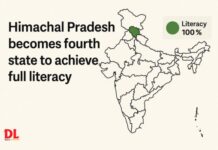


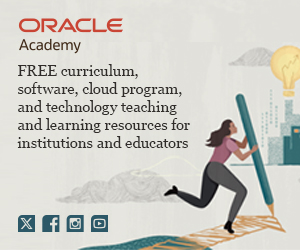

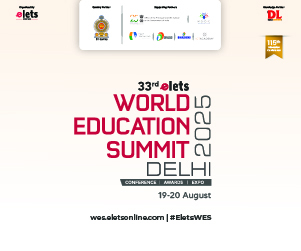
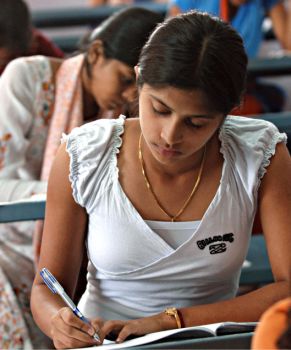


 Financial Literacy and Dr Lamba
Financial Literacy and Dr Lamba


 There is a grave need for accreditation process to keep pace with higher education institutions in the world. It will also help in keeping abreast of changes in higher education. Several factors hinder the global employability of professionals. For instance, deep-rooted and highly contextual differences in educational framework of countries continue to be major impediments in credentialing engineers and management professionals. If the educational frameworks of different countries contain pre-defined set of internationally expected norms, then, it may form the basis of harmonizing the various educational systems.
There is a grave need for accreditation process to keep pace with higher education institutions in the world. It will also help in keeping abreast of changes in higher education. Several factors hinder the global employability of professionals. For instance, deep-rooted and highly contextual differences in educational framework of countries continue to be major impediments in credentialing engineers and management professionals. If the educational frameworks of different countries contain pre-defined set of internationally expected norms, then, it may form the basis of harmonizing the various educational systems.

 Road Ahead
Road Ahead According to Ashok Thakur, Secretary, Department of Higher E d u c a t i o n , “Once we get the full-fledged members h i p status of the Washington Accord, we will be able to get global recognition for our Indian degrees and improve mobility of students and engineers. After acquiring full status of the Washington Accord, employability of Indian engineers in other countries will go up substantially. This will help our students pursuing technical education”. Right now, India is a provisional member of Washington Accord since 2007 and is confident to get the full-fledged status by June when a meeting of the body is due to take place. Two members were deputed by the Washington Accord to help India align its accreditation norms with the best international practices.
According to Ashok Thakur, Secretary, Department of Higher E d u c a t i o n , “Once we get the full-fledged members h i p status of the Washington Accord, we will be able to get global recognition for our Indian degrees and improve mobility of students and engineers. After acquiring full status of the Washington Accord, employability of Indian engineers in other countries will go up substantially. This will help our students pursuing technical education”. Right now, India is a provisional member of Washington Accord since 2007 and is confident to get the full-fledged status by June when a meeting of the body is due to take place. Two members were deputed by the Washington Accord to help India align its accreditation norms with the best international practices. If this happens, it will be an important step forward. It will bring accreditation into focus in India. It will also ensure seamless mobility of our students in different countries and continents for employment and other purposes. It will also bring greater international credibility to our accreditation processes, and increase our confidence in delivering quality education to our youngsters,” said Surendra Prasad, Chairman, National Board of Accreditation.
If this happens, it will be an important step forward. It will bring accreditation into focus in India. It will also ensure seamless mobility of our students in different countries and continents for employment and other purposes. It will also bring greater international credibility to our accreditation processes, and increase our confidence in delivering quality education to our youngsters,” said Surendra Prasad, Chairman, National Board of Accreditation.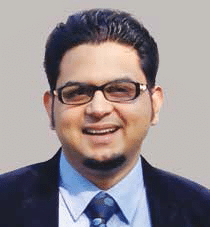


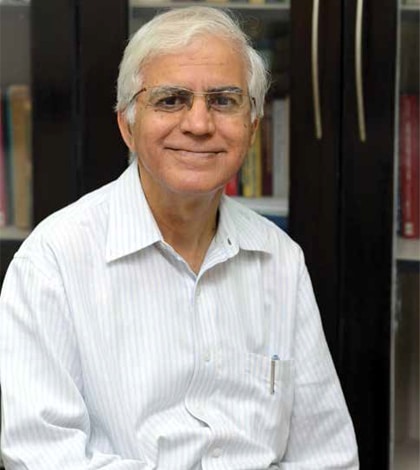



 “Engineering education have followed changes in technology and society to meet the critical challenges and to provide the workforce required skill sets to integrate new developments into the economy” –
“Engineering education have followed changes in technology and society to meet the critical challenges and to provide the workforce required skill sets to integrate new developments into the economy” –  2.
2. Career path:
Career path:  4.
4.  6.
6.  7.
7.  8.
8.  “In this electronic age, new gadgets with multiple and advanced features are a boon to us. Noise free communication and high speed data transfer has become the need of the day. Improved analytical and diagnostic instruments are being developed increasing the demand for engineering graduates in electronics and communication engineering.” –
“In this electronic age, new gadgets with multiple and advanced features are a boon to us. Noise free communication and high speed data transfer has become the need of the day. Improved analytical and diagnostic instruments are being developed increasing the demand for engineering graduates in electronics and communication engineering.” – 10.
10. 



 India is on the cusp of launching itself on the global map. The winds of political change that swept the country resulted in a decisive mandate for the Narendra Modi-led NDA government. With this, several sectors are now poised for a renewed thrust and faster pace of growth. Among many others, India’s education sector needs an overhaul and a comprehensive policy is the need of the hour. That will rejuvenate the education system and help India adapt to changing global educational challenges.
India is on the cusp of launching itself on the global map. The winds of political change that swept the country resulted in a decisive mandate for the Narendra Modi-led NDA government. With this, several sectors are now poised for a renewed thrust and faster pace of growth. Among many others, India’s education sector needs an overhaul and a comprehensive policy is the need of the hour. That will rejuvenate the education system and help India adapt to changing global educational challenges.